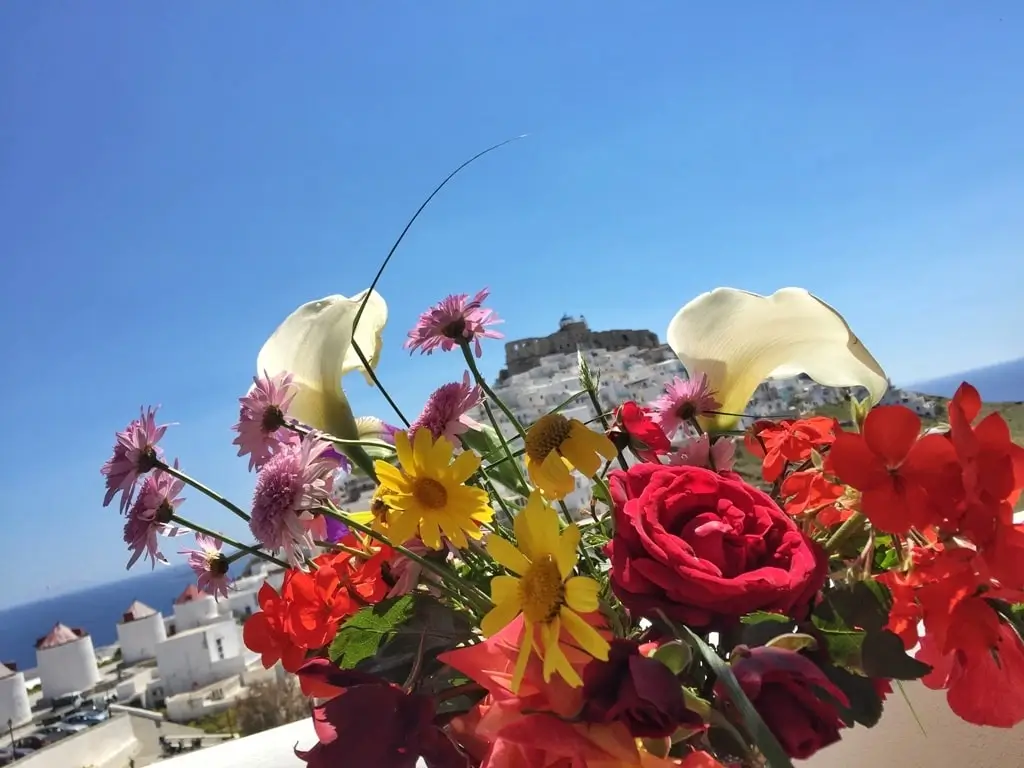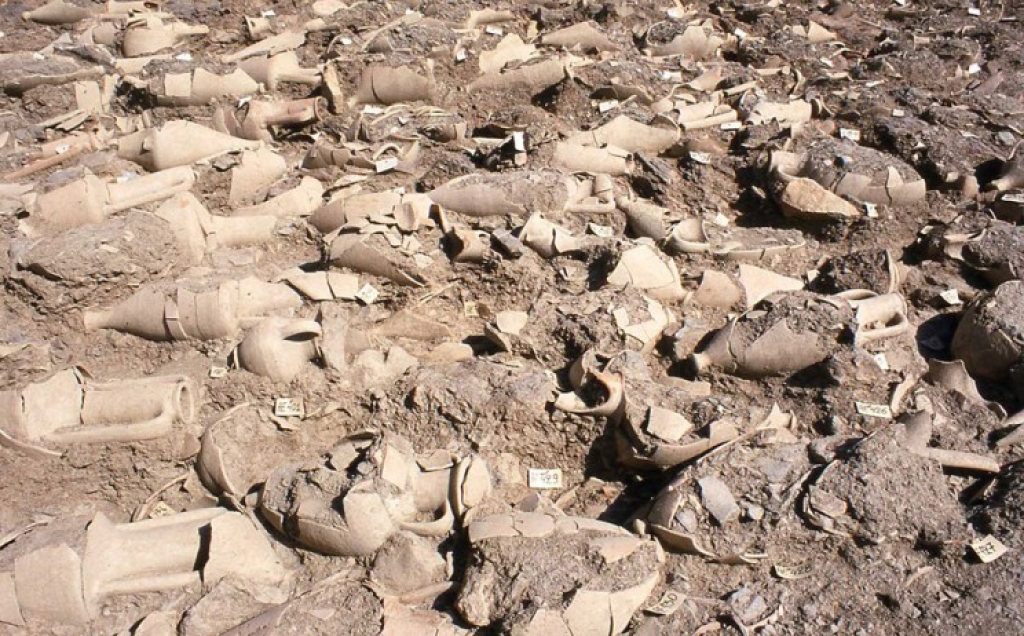
The infant cemetery of Astypalea
The only one in the world and whose origins are lost in the centuries of history and in the legends of the Mediterranean.
The infant cemetery of Astypalea was discovered in 1995, during an exploratory excavation on a plot of land in the area of Kylindra, in the town of Astypalea. The first explorations indicated the findings of great archaeological, anthropological and historical value. A plethora of vessels with potted babies (buried in pots, the word comes from the pot).
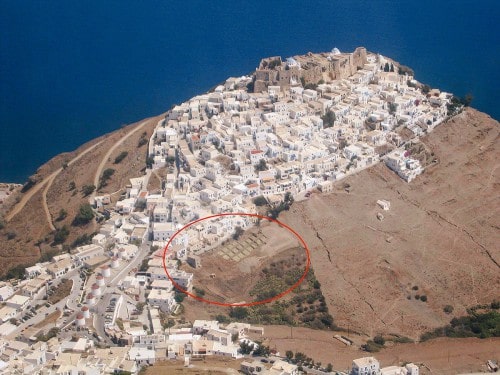
The findings date from the geometric period to the Hellenistic period. So far, more than 3,000 ancient jars with baby skeletons have been found. The cemetery accepted stillborn infants and infants up to two years of age, and which according to custom at the time, were placed in pots as
the shape was considered to protect infants in a similar manner to the uterus. These pots were buried in podiums, next to each other.
The oldest ones are hydrias with written decorations on them and date to the late geometric period (A hydria is a type of water-carrying vessel in the metalwork and pottery of Ancient Greece). The vessels of the Archaic period are much larger than the geometric ones, with rare motifs on them, while there is a very large number of amphorae of various shapes and origins: Samos, Chios, Thassos, Kos, Rhodes, Knidos, Klazomenon, and even the Canaanite-Palestinian type. The cemetery is believed to have been near the Sanctuary of Eileithyia, daughter of Zeus and Hera, who was the patroness of the postpartum and maternity wards. The sanctuary has not been discovered to this day.
An opening was usually made in the hollow part of the vessel in order to insert the infant, and then sealed with the cut piece or with a shell or stone. The most common position of the body was feet towards the base, so the head was closer to the neck of the vessel, and then sealed with stone. When larger vessels were used for burial, the cutting was not necessary, as the child would fit through the opening at the top, and rarely from the base of these jars.
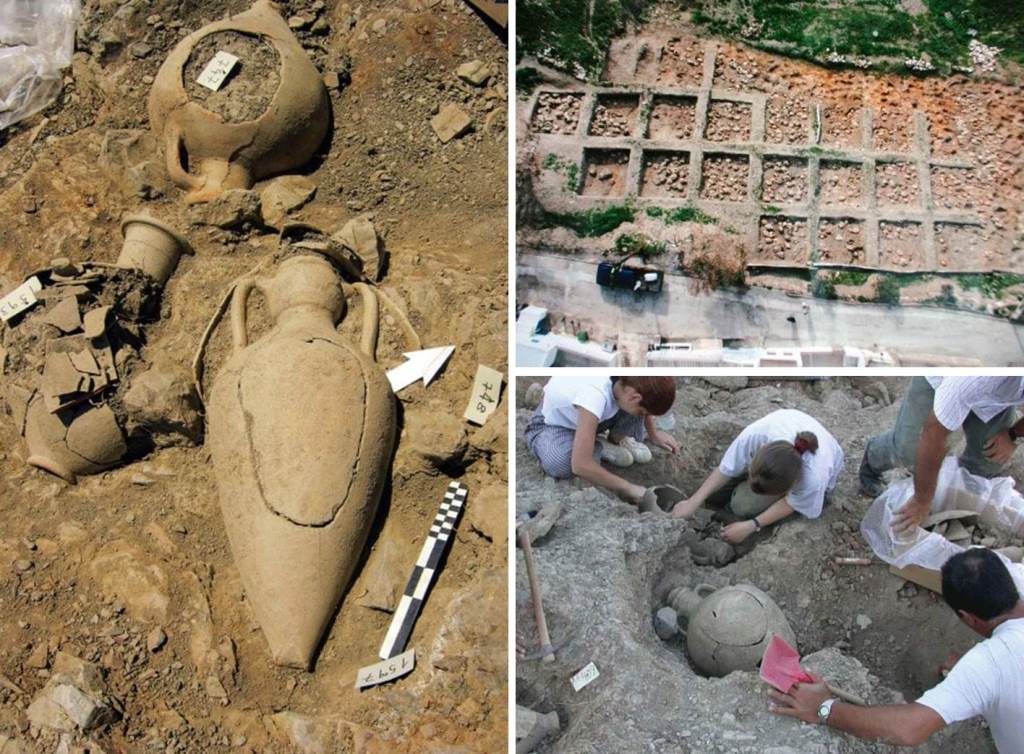
The grave goods for the infants included miniature tools (obsidian blades, scrapers, etc.) and one with a stone bead, but also artefacts of the immediate environment including shells (purple dye, cones, etc.) which show an intricate grave ritual, and also involved produce pyres (grapes, wheat, almonds, barley, lentils, olives) and the consumption of mutton, ie food offerings to the dead children or on-site consumption (epitaphic meals) by relatives.
The study of the skeletal matter of the cemetery indicates that the pot burials usually involved stillbirths - at a rate that exceeds 75% of the total burial numbers. There are a few older infants and toddlers pot burials, and some instances with twins.
It is worth noting that in ancient times, infants and newborns (due to their high mortality) were not considered regular members of society and therefore did not receive the same honours as adults did. In fact, according to Plutarch, very young children were not allowed offerings, or particular care taken for their graves, as the law forbade it. However, research has shown that a ritual burning of seeds took place, and alongside the shells, beads and tools, formed a customary paradigm of burial practices.
The plethora of potted infants and the long period of time these findings date back to, testify to the importance that Astypalea played in antiquity, as a centre of strategic significance. It is possible that babies from all over the Mediterranean were buried here, a speculation that remains to be proven by anthropological research.
This practice of the Late Neolithic / Early Bronze Age was discovered in 2017 on another excavation on the island, in the area of Vathi, where infants were buried in the potted method, but date to the geometric period. In this case, the infant burials took place in an organized space. In Vathi, Dr. Andreas Vlachopoulos of the University of Ioannina and the Archaeological Society leads the excavation.
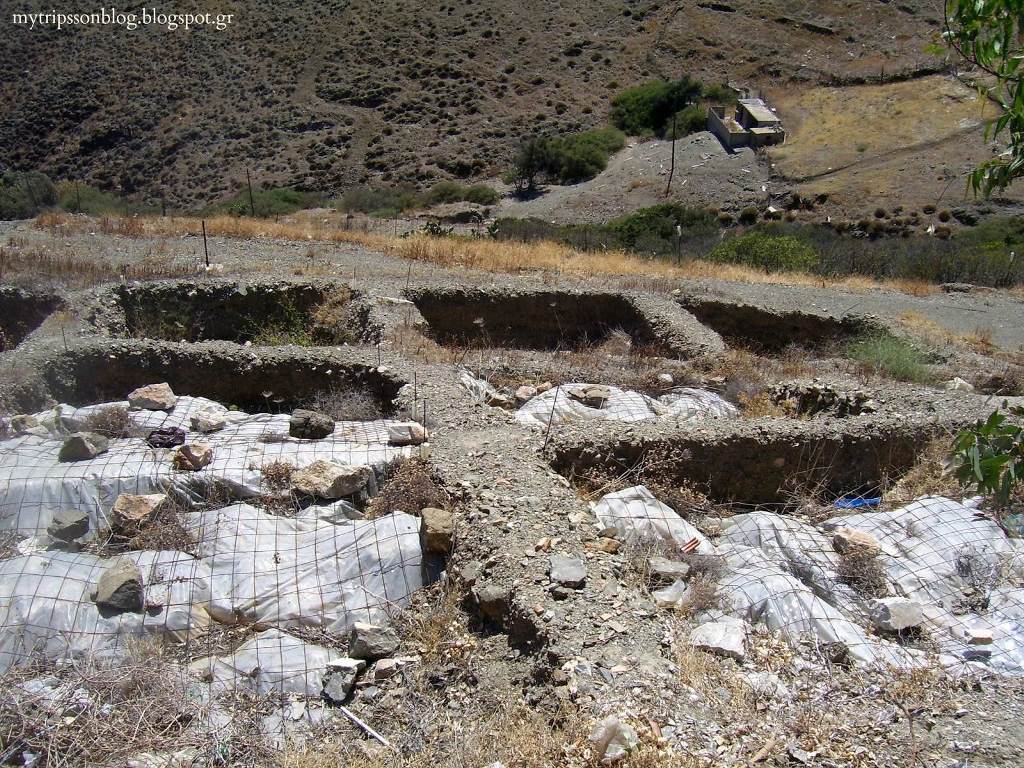
Although the burial of infants and children in large vessels is a burial custom found in many parts of the Mediterranean, not only in historic but also in prehistoric times, the uniqueness of the burial site in Kylindra, lies in the fact that it is a burial place exclusively for infants and toddlers - most of which died at birth – in high burial concentration and duration of use.
The uniqueness of this discovery in Astypalea has received great international interest. A team of anthropologists under the professor’ Simon Hillson lead of the University of London's College of Bioarcheology, and in collaboration with the Dodecanese Antiquities Office are working on the findings, and for the past two years an international team of English, Canadian, Finnish and American researchers of varied human skeleton expertise, are engaged on the same subject.
SOURCES
http://www.kathimerini.gr/434029/article/epikairothta/ellada/ta-8ammena-vrefh-ths-astypalaias
http://www.kathimerini.gr/974744/gallery/politismos/eikastika/astypalaia-pente-xronia-ereynas-sto-va8y
https://www.lifo.gr/articles/archaeology_articles/208173/nekra-vrefi-se-amforeis-giati-to-arxaio-nekrotafeio-tis-astypalaias-proselkyei-diethnes-endiaferon
https://www.dimokratiki.gr/08-05-2017/nekrotafio-vrefon-stin-astypalea-stis-simantikoteres-anakalypsis-tis-archeologikis-eterias/
Photos: Dodecanese Antiquities Office
Translation by Kallichoron Art Boutique Hotel

